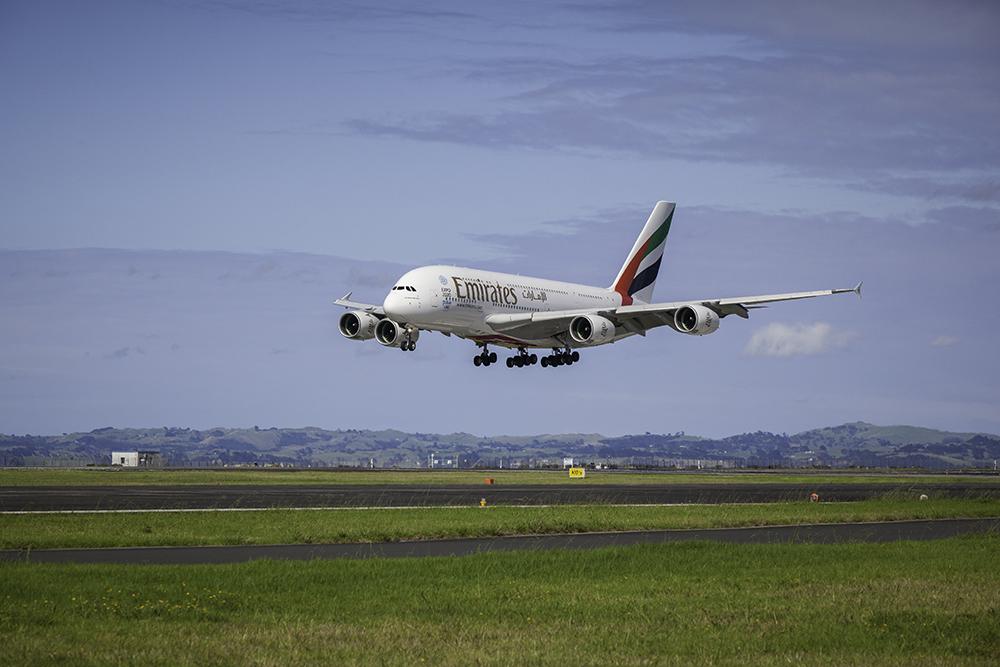
Despite all the talk about it, predictive maintenance is still making only slow and partial progress in airline shops. One reason is that some airline maintenance managers have yet to be convinced of predictive maintenance’s value.
For example, Emirates has more than 250 widebody aircraft, split about evenly between Airbus A380s and Boeing 777s. The airline also has a large and sophisticated maintenance and engineering department. But experience with predictive maintenance has so far been disappointing, according to one executive.
Ahmed Safa, divisional senior vice president of Emirates Engineering, notes, “Emirates was one of the first airlines to adopt Boeing’s Airplane Health Management, and we’ve worked closely with them to enhance its features.”
Currently, Emirates Engineering is working with Boeing on its health monitoring module, and it is also working with Airbus on its Skywise predictive system. However, Safa says, “Airplane Health Management and Skywise are more reactive than predictive.”
The Emirates shop has also tested predictive solutions from other providers with varying outcomes. “To date, we’ve not really seen any tool in the market that delivers demonstrable and measurable outcomes for predictive maintenance,” Safa says. “There’s a lot of excitement around predictive MRO, and certainly there’s appetite in the industry to explore new technology and tools in this area, but it’s still early days.”
Time, collaboration, experience and plenty of hard work are still necessary to exploit the benefits of predictive maintenance. Yet some airlines are paying for predictive services, indicating that some MRO managers already see or expect benefits from these services.
"Predictive maintenance is one of the elements in the new era of using data to improve efficiencies, costs and so forth in aircraft maintenance,” argues Chris Markou, head of technical operations at IATA. “Clearly a number of airlines understand and, I would say, embrace this."
But using these techniques will take time. “The issue is that we still don’t have a holistic approach; it has to be done as a step at a time,” Markou says. However, he is confident the steps will pay off. "In conjunction with Aircraft Health Monitoring, I am very confident that it is the future for airlines and others to address many aircraft maintenance issues."
Predictive tools are offered by both major MROs and OEMs. Air France Industries-KLM Engineering offers Prognos. Lufthansa Technik’s Aviatar offers predictions of failures in more than a hundred use cases for different systems on different aircraft. Airbus has its Skywise predictive tools and Boeing offers, along with health monitoring, three other predictive solutions: Self-Service Analytics, Insight Accelerator and, through its customer support team, Fleet Health Monitoring.
Insight Accelerator was developed to assist operators in discovering, testing and deploying prognostic algorithms for fleet monitoring, based on each airline’s operating conditions. Again, the object is to optimize maintenance intervention and avoid unscheduled events.
Insight Accelerator adds its own alerts to the Health Management dashboard. High priority alerts indicate impending mechanical failures and urge immediate action. Medium priority alerts indicate symptoms of degradation that may lead to future failures.
Each time an action recommended by Health Management is taken, it is recorded, and the effectiveness of the action is analyzed by Self-Service Analytics. This analytics service can also compare each airline’s performance with the performance of the worldwide fleet of each aircraft type.
Finally, in late 2020, Boeing launched Fleet Health Monitoring to identify and proactively address maintenance issues. Customer support teams work around the clock to monitor fleet-wide performance, diagnose issues and recommend solutions to airlines.





